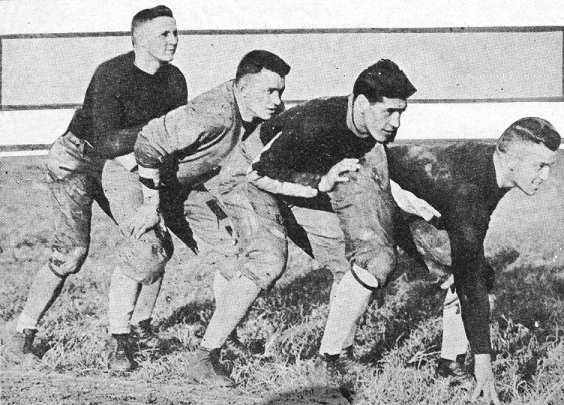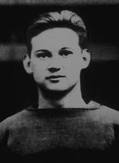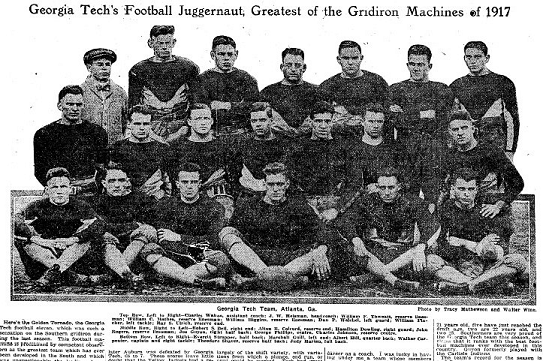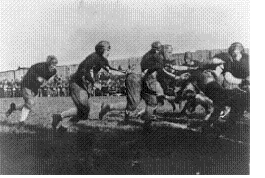
Georgia Tech's great 1917 backfield: (left to right) halfback Everett Strupper, fullback Judy Harlan, halfback Joe Guyon, and quarterback Albert Hill. This quartet makes the short list for greatest single platoon backfield of all time, joining Carlisle 1912, Notre Dame 1924, and Army 1945. Interestingly, Joe Guyon also started in that 1912 Carlisle backfield.
Called the "Golden Tornado" at the time, 9-0 Georgia Tech blew away every opponent, outscoring them 491-17, but the big win came 41-0 over 9-2 Penn, whom 10-0 Pittsburgh only beat 14-6. Georgia Tech was hailed far and wide as the best team of 1917, and time has done nothing to dim that view

 I summarized previous Pittsburgh teams in my national championship
articles for 1904, 1910, 1915, and 1916,
and I covered their Hall of Fame coach, Pop Warner, in the 1915 piece.
This was not at all the same Pitt team as the 1916 MNC edition, because
they lost all 5 of their All Americans from the previous season
I summarized previous Pittsburgh teams in my national championship
articles for 1904, 1910, 1915, and 1916,
and I covered their Hall of Fame coach, Pop Warner, in the 1915 piece.
This was not at all the same Pitt team as the 1916 MNC edition, because
they lost all 5 of their All Americans from the previous season
 Georgia
Tech defeated their opponents by an average score of 55-2, the closest
game a 32-10 win over Davidson, the only team to score a touchdown on
Tech and to hold all of their backs under 100 yards. But GT still
totaled 236 yards on 55 carries, and Judy Harlan returned an
interception 40 yards for a touchdown
Georgia
Tech defeated their opponents by an average score of 55-2, the closest
game a 32-10 win over Davidson, the only team to score a touchdown on
Tech and to hold all of their backs under 100 yards. But GT still
totaled 236 yards on 55 carries, and Judy Harlan returned an
interception 40 yards for a touchdown